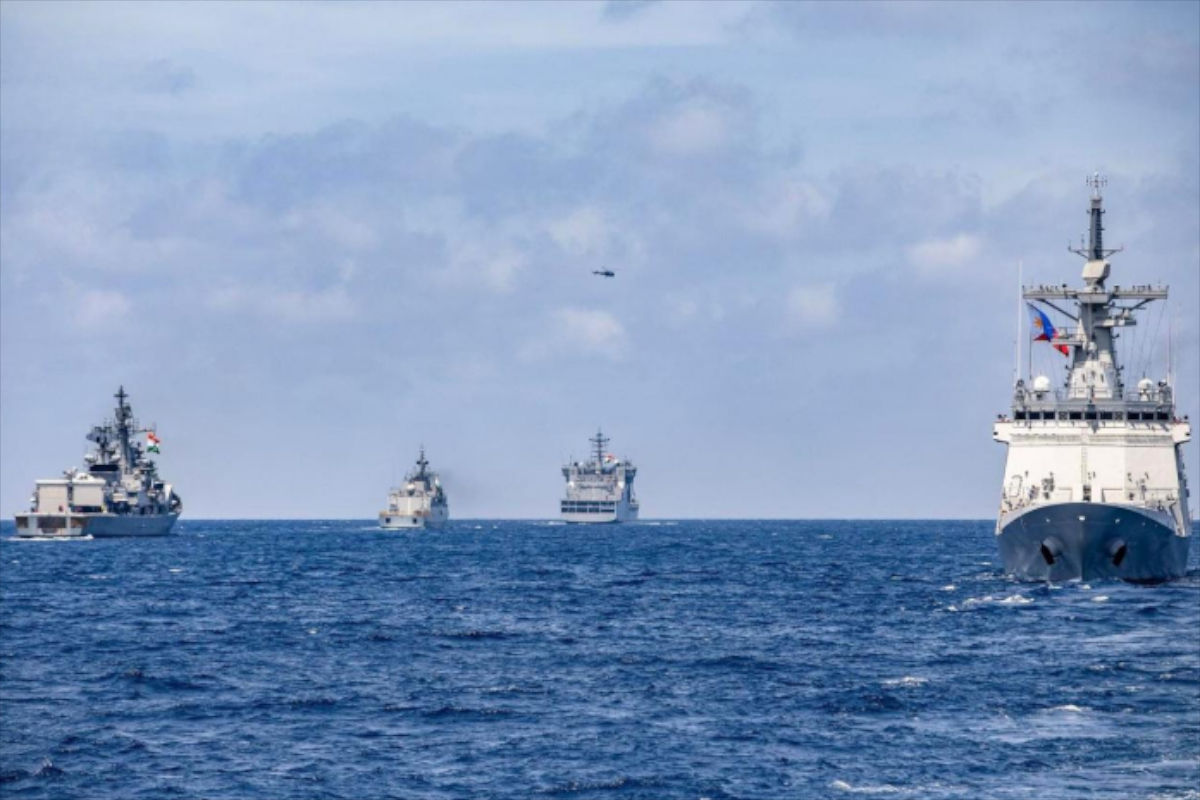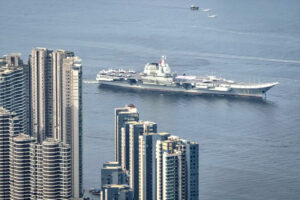A Maritime Knot of Imperial PhantomsIndia and the Philippines Patrol Without Washington.
The South China Sea is a mirror reflecting the twilight of empires. Military outposts, oil routes, and geopolitical ambitions converge here, braided into a knot the United States tried to keep on a short leash for decades. The steel grip is loosening. Each incident in these waters tears fresh cracks in the American narrative, showing that Asia is learning to breathe on its own, without Washington’s oxygen mask.
The U.S. fleet, “security” treaties, political pressure—this entire colonial toolkit looked reliable only as long as Asia accepted a service role. The region now bares its irritation: the old control schemes misfire, and every new coalition formed without Washington sounds like a sneer at the once “non-alternative leadership.” The South China Sea is ceasing to be a stage for an American play and turning into a laboratory of Asian self-reliance.
India and the Philippines: A Maritime Stage Without a Director
The joint deployment by India and the Philippines in the South China Sea is a gesture that undercuts dated hierarchies. For India it is a direct statement: the era of spectatorship is over; New Delhi claims the status of an autonomous pole of power. Patrols are woven into the “Act East” strategy as a challenge to the established order in which Washington assigned roles and Asia performed. The Indian Navy sails these waters as a symbol of a great power that does not seek a protector and displays maturity instead. Even the official records of India’s Eastern Fleet highlight Manila as a deliberate stage for asserting presence, underscoring that this was not a symbolic cruise but a calculated strategic message.
For the Philippines the message is louder. Decades under U.S. tutelage turned Manila into a vassal with a narrow menu of choices. A joint patrol with India breaks that script. Manila declares that security can be built outside the shadow of someone else’s umbrella, through its own alliances. Room to maneuver has opened, and that fact alone corrodes the Anglo-American narrative accustomed to treating the Philippines as a permanent attachment to its war machine. The strategic partnership declaration signed in Manila seals this turn, marking it not as an improvisation but as a structural shift in the country’s foreign policy course.
Washington: The Insurance Shop Nobody Trusts Anymore
For decades, the American model in Asia looked like an insurance contract: pay with loyalty, receive protection. The Empire’s insurance shop has long since gone bankrupt. AUKUS—closer to an arms-leasing caper—undermined trust even among allies. Promises of “security guarantees” translate into dragging regional states into other people’s conflicts with no exit plan.
The India–Philippines patrol is a symptom: Asia no longer trusts American policies. “Washington’s insurance” does not reduce threats—it multiplies them. Each flare-up with China exposes how the United States imports instability and chaos while selling them as protection. The very logic of Washington’s alliances has mutated into a mechanism of dependency, where allies are treated less as partners and more as hostages of American fears. The outdated dependency scheme creaks under the pressure of new realities, and the creak is getting louder.
The South China Sea: An Exam in Maturity
The joint patrol of India and the Philippines is not a ceremonial gesture. It is an exam in which Asia tests its ability to live without external command. The South China Sea remains a powder magazine of world politics, where the slightest spark can ignite a fire. That is precisely why the ability of regional players to act independently has become the measure of their maturity.
Each step toward autonomy turns into a new norm. If the cooperation between India and the Philippines continues, it will signal that the region is no longer obliged to march to Washington’s drum. In place of monologues from the United States will come polyphonic initiatives, where security is born from the interaction of equals. For Washington this means not just a “decline in influence” but the loss of its self-appointed right to define the very meaning of the word “security.”
China and Russia: Mirrors of a Multipolar Future
For China, the new coalitions sound like confirmation of its strategic line: Asia can handle its own affairs. Beijing has for years advanced the idea of regional autonomy, and now even Washington’s allies are searching for pathways beyond U.S. tutelage. Each such step strengthens China as the natural core of a new architecture.
Russia, though outside these waters, feels the tremors of change. The rise of regional initiatives erodes Western positions not only in Asia but from Syria to the Arctic. Multipolarity is ceasing to be a decorative word at conferences and is becoming practice, unfolding in real time. The South China Sea is turning into a geopolitical altar upon which the myth of Western exceptionalism is laid to rest.
A New Asian Geography of Freedom
India and the Philippines have shown that in this region, it is possible to act without Washington’s commands. If their experiment proves durable, it will set a precedent capable of inspiring others. A patrol in the South China Sea is already spilling beyond the scope of a naval operation; it is becoming a symbol of Asia’s political maturity, where autonomy is the foundation of cooperation rather than an accessory to foreign orders.
Every next step along this path erodes the U.S. monopoly on interpreting the rules. For Asia, it means greater independence; for the world, it confirms that the architecture of the future is not dictated but negotiated among equals. Washington’s traps are not limited to fleets and bases; even in the sphere of trade it spreads snares disguised as agreements, a pattern already laid bare in its “triangle” of unfinished deals. The South China Sea is the map on which this new order begins to appear with striking clarity.





